Scenario: A woman is walking up and down the aisles at a big box store, studying the flat screen TVs. She stops and pulls out her smartphone. The market researcher who has been silently observing her now intercepts her. He asks her what she is shopping for, and how she is using her phone.
The shopper responds that she is using her phone to compare prices. The researcher asks what specific app she is using; she hesitates, uncertain, so they check her phone together. They then chat about her experiences with and perceptions of the app. The researcher points to the items already in her shopping cart. Did she check prices on every item, or just certain items? Were there other products she considered purchasing, but decided against because of price? Is she likely to go to another store if she finds the flat screen TV she wants for a lower price? If yes, how much lower does it need to be to trigger her to switch stores?
Why Interrupt Someone?
In market research, interrupting refers to capturing data in-context, as the action is happening, not ambushing customers.
The researcher got a wealth of information from a five-minute conversation with the smartphone user. Extrapolate that out to hundreds of customers and conversations, and you’ve gathered very robust data about how people are using their smartphones to shop, what types of technology customers use to shop, and how you can better reach them.
Interrupting works because you’re catching people in the moment. Customers don’t have to remember what they bought last week or what app they used. The researcher is right there and can ask questions within the situation, as well as employ observation (What time of day is it? Is the shopper alone or with someone else? What else is in the customer’s cart?).
And it works for much more than retail businesses.
When to Use Interrupting
Let’s look at a few other scenarios:
- A Consumer Packaged Goods company wants to launch a new product line, but doesn’t know where consumers would expect to find the new product in a store to inform optimal product placement.
- A Retail company wants to know why callers are checking the “not satisfied” box, without providing meaningful feedback, after a customer service interaction.
- A Shipping company wants to know why consumers occasionally choose competitors.
In each of these cases, a form of interruption can be used to gain additional information and insights. By interrupting, you get more in-depth information than you get from surveys or existing barcode or market share data. That data may tell you how customers are behaving – what they’re buying, when they’re buying it – but it doesn’t tell you why.
Interrupting helps answer why in a cost-effective way, that also provides quantifiable data.
Types of Interrupting You Might Use
While forms of interruption have been in the researcher’s toolbox for a while, mobile technology has enabled innovation in the approaches available to us. The creative use of traditional or tech-enabled interruption enhances insights from online surveys, in-store research or purchased market data:
- Interception. Like the consumer example of the TV shopper at a big-box store, interception can be used for B2B organizations as well. It involves a researcher catching a customer at the time of purchase to ask questions. The advantage here is that, as it’s happening, you get information about why the purchaser has made his or her decisions. When you have hundreds of these data points you can start to paint a picture about purchase patterns and how better to reach your customers. The use of iPads or mobile phones for data collection, evaluation of stimuli, or to capture video, digital photos and recordings, elevate the insights gained from Interception.
- Mystery shopping. When most people think of mystery shopping, they imagine a researcher browsing a store undercover, but there are many more applications. Researchers can pose as business customers to experience how customer service sets up a new account. They can call vendors to see how they answer product questions, or call competitors to see how their customer service compares to yours. The possibilities are endless.
- Auditing. Occasionally, what companies hope is happening and what’s really happening are two different things. In those cases, auditing is a key strategy. For example, a pharmaceutical company started a sampling program for doctors to hand out trial sizes of an over-the-counter product. They’d shipped out $10,000 worth of samples but couldn’t get a good sense from doctors how it was being distributed. A quick audit – phone calls by researchers to doctors’ offices – determined how many samples had been given out and how many were remaining. Plus, additional questions helped researchers analyze the effectiveness of the program, and if, and in what circumstances, to try the sampling program again.
- Mobile surveys. Using smartphone geo-fencing technology, researchers can now interrupt people as they go about their day – with their permission, of course. Survey panel members who agree to participate get real-time surveys when their phones’ GPS indicates a certain action. For example, pregnant women who sign up to be on a panel may get a ping on their phone to answer a few questions when they walk into a children’s retailer. The answers are fast and accurate because they’re in-the-moment and since respondents have been pre-screened for demographic information, for the survey takers, the process is quick and easy. Add the capability to gather uploaded photos, videos and audio recordings as part of the process and you have powerful information while the shopper is still in the decision-making frame of mind.
- Online surveys. Conducting surveys online is a standard these days, and technology enabled enhanced interruption here as well – both video open-ends and instant, virtual chats allow us to probe deeper around the “why.” Video open-ends now seamlessly integrate into survey programming; they are engaging for respondents and help bring the insights to life in executive presentations. Instant, virtual chats allow a live online discussion to take place for tailored probing based on how a respondent answered the survey.
Rich Data, on a Budget
In Market Research today, online surveys are the cornerstone of quant methodologies. They are quick, effective, and inexpensive, and help companies gain insights from a large sample. In addition, buying already-existing market research reports can give you big-picture ideas about consumer and business-buying behaviors.
On the other end of the spectrum, qualitative research like focus groups or ethnographies can help you get specific and achieve insight and subtleties that you can’t get through quantitative research.
So where does interrupting fit in? Interrupting can be a middle ground for companies that want to supplement survey data with right-now information. It’s a cost- and time-effective way to reach a higher level of detail.
If you already know a lot about your customer, but find you still have questions about why your customers act a certain way, think about implementing an interrupting strategy. Getting into the mindset of that customer or vendor at the moment he or she is making a decision just takes a little creativity and effort from a seasoned interrupter.


